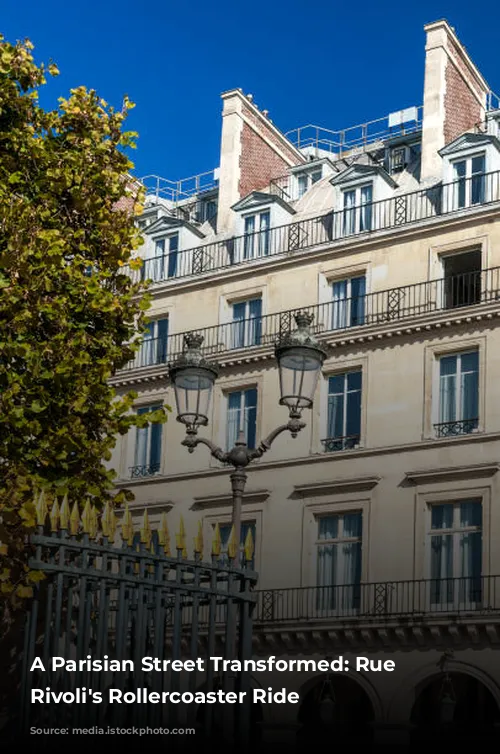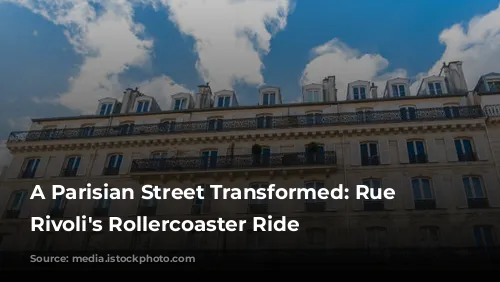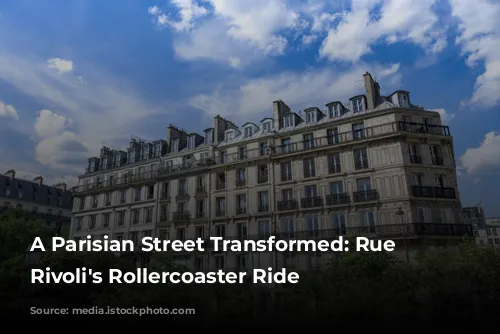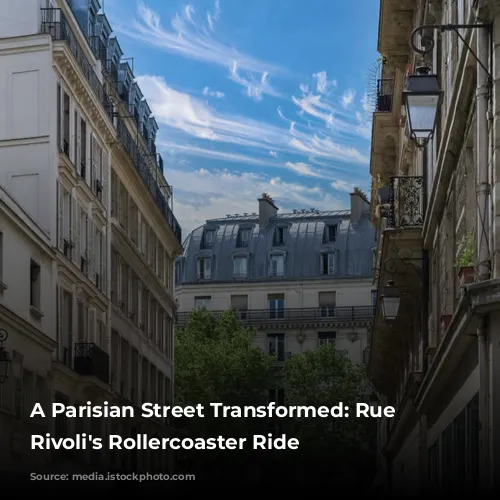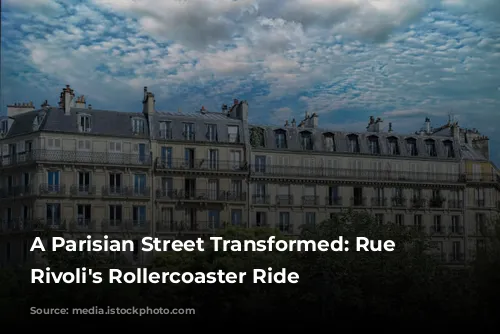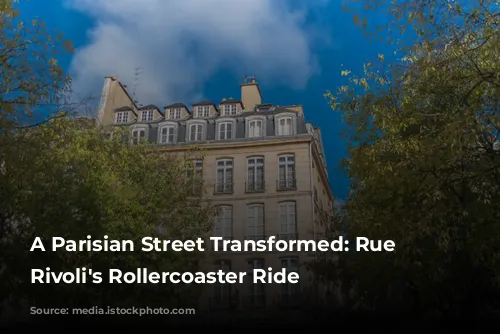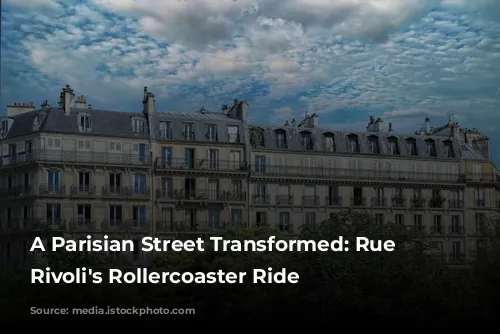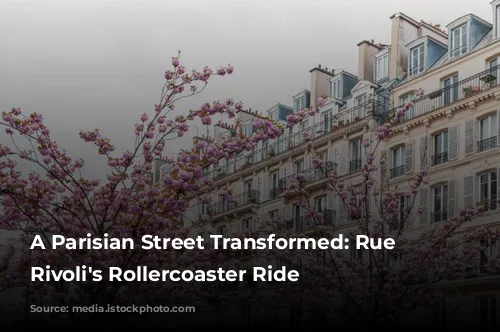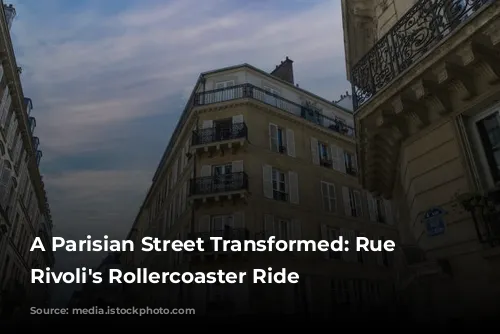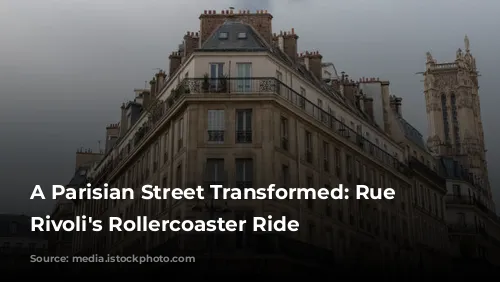Paris’s iconic Rue de Rivoli has undergone a dramatic transformation, shifting from a traffic-choked thoroughfare to a pedestrian-friendly haven. This change, implemented in May 2020, has sparked a heated debate about the street’s future and its impact on local businesses.
From Gridlock to Green
The once congested Rue de Rivoli, notorious for its endless traffic jams and blaring horns, has been reborn as a peaceful pedestrian paradise. This transformation, aimed at prioritizing walking and cycling, has created a more pleasant environment for locals and tourists alike. According to a study commissioned by the City of Paris, the street’s commercial health has remained strong despite the changes.
Sylvain Dauphin, a local business owner, embraces the new atmosphere, highlighting the positive impact on his clientele, which includes Parisians, suburban residents, and tourists. He believes the pedestrianization has dispelled the anxieties of some traders who feared losing customers due to restricted access.

A Mixed Bag of Opinions
While the positive effects of the transformation are apparent to some, others have voiced concerns about its unintended consequences.
Concerns have been raised about the safety of pedestrians navigating the bustling bike traffic. A saleswoman, who wished to remain anonymous, expressed fears about being hit by cyclists who, she claims, often disregard pedestrian safety.
The shift away from car traffic has also led to a decline in foot traffic for some businesses. One cheese shop owner laments a noticeable drop in customers, attributing it to the reduced accessibility for cars. A grocery store owner echoed these concerns, lamenting the loss of regular customers and the inconvenience of public transportation access.
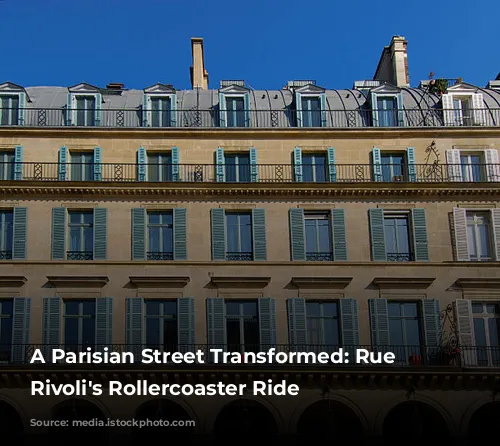
Economic Growth Amidst Concerns
Despite these concerns, Rue de Rivoli boasts one of the lowest vacancy rates in Paris, suggesting a strong commercial presence. While rents remain high, the street’s desirability as a retail destination persists.
Nicolas Bonnet-Oulaldj, deputy mayor of Paris in charge of commerce, highlights the street’s diverse array of brands as a testament to its thriving commercial activity. He sees the pedestrianization as a positive factor in boosting the street’s attractiveness.
Ariel Weil, mayor of central Paris, draws parallels with other European cities like Barcelona and Rome, advocating for pedestrian-friendly spaces as a key factor in enhancing commercial vitality.
However, not everyone shares this optimistic view. Aurélien Véron, a right-wing opponent, argues that while tourism thrives in the area, the transformation has led to the displacement of residents. He expresses concern that the anti-car policy disadvantages elderly individuals, families with young children, and people with disabilities.

A Balancing Act
Eléonore de Boysson, president of La Samaritaine, a renowned department store on Rue de Rivoli, acknowledges the district’s renewed dynamism. However, she emphasizes the need for improvements to the street’s layout, advocating for dedicated bike parking, clearly marked cycle paths, and safer pedestrian crossings.
The BHV, another prominent department store, has seen mixed results since the transformation. While some customers initially expressed dissatisfaction with the lack of parking, the store remains committed to its role as a retail destination for Parisians.
Uber, a ride-hailing company, has challenged the ban on VTCs (private hire vehicles) accessing Rue de Rivoli. Their appeal reflects the ongoing debate about the future of transportation and the impact of urban renewal on different stakeholders.
In conclusion, Rue de Rivoli’s transformation has yielded both positive and negative outcomes. While some businesses thrive amidst the pedestrian-friendly atmosphere, others struggle with reduced accessibility for cars. As the debate continues, it is essential to find a balance between pedestrianization, accessibility, and the needs of businesses and residents alike.
